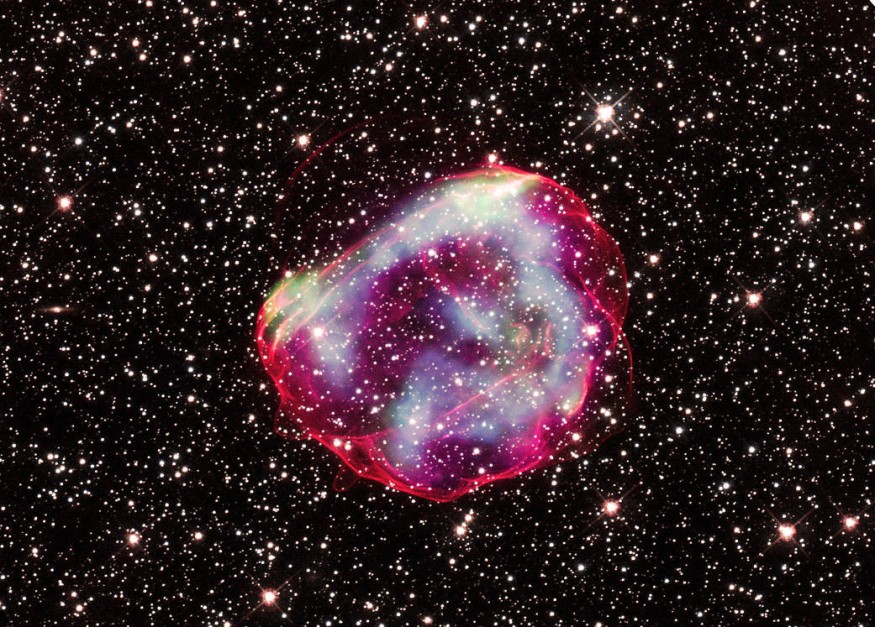Astronomers have used NASA telescopes to study the magnificent supernova remains in a nearby galaxy and have gathered enough data to reconstruct what they looked like in their pre-supernova state.
They used data from the NASA space telescopes Chandra, Hubble, and Spitzer to determine how recently the star in SNR 0519 exploded and to learn more about the supernova's surroundings.
SNR 0519-69.0, sometimes known as SNR 0519, is a supernova remnant that resulted from the explosion of a white dwarf star, SciTechDaily wrote. The star was killed in a thermonuclear blast after reaching a critical mass, possibly by combining with another white dwarf or absorbing material from a companion star.
NASA Telescopes Witness Stellar Death of Star
SNR 0519 died in a thermonuclear explosion after reaching a critical mass. According to NASA, it could be by absorbing matter from a companion star or combining it with another white dwarf.
Scientists use Type Ia supernovae for various investigations, including studies of thermonuclear explosions and calculations of the separations between galaxies across billions of light-years.
SNR 0519, a small galaxy in the Large Magellanic Cloud, is about 160,000 light-years from Earth. Scientists combined Hubble Space Telescope and Chandra X-ray Observatory images from NASA with optical and X-ray data to create this composite image.
Green, blue, and purple represent low, medium, and high-intensity X-rays from SNR 0519, with some of these colors overlapping to seem white. Optical data shows the remnant's perimeter in red and the stars around it in white.

NASA Telescopes Witness Stellar Death of Star
Researchers can now "rewind" the star development and observe it before it violently bursts.
The researchers looked at Hubble images from 2010, 2011, and 2020 to establish the material's velocity in the blast wave from the explosion, which ranges from around 3.8 million to 5.5 million miles (9 million kilometers per hour).
If the speed was near the higher end of those projected speeds, the scientists concluded that light from the explosion would have reached Earth around 670 years ago, or around the height of the Ming dynasty in China and the Hundred Years' War between England and France.
The initial explosion may have caused the material's speed to slow down, but it happened more recently than 670 years ago, according to NASA.
The Chandra and Spitzer data include clues that this is the case. Researchers found that while the slowest-moving material is located in the brightest areas of the remnant's X-rays, the fastest-moving material is not associated with any X-ray emission.
According to these results, a component of the blast wave may have hit the thick gas encircling the remnant, slowing it down as it proceeded. NASA said astronauts could use further Hubble data to determine the exact minute the star died.
Researchers described more of these results in the August issue of The Astrophysical Journal, and a preprint is available here.
RELATED ARTICLE : NASA's Hubble Telescope Captures 'Spiral Galaxy' Having a 'Mysterious X-ray Source'
Check out more news and information on Space in Science Times.












